Make the most of research automation. Stop drowning in routine projects. Become a happier and more valuable researcher.
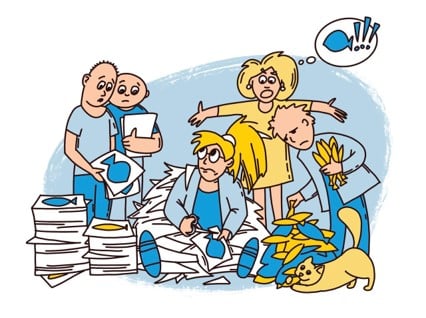
We live in an accelerating world. To better understand this, just look at the world some fifteen years ago. The first iPhone had just been introduced. There was no Uber, no Airbnb, no Tesla, no Zoom. The world was so unimaginably slow!
In response to this fundamental shift, businesses are forced to change processes in order to get better products to market faster.
We end up in a situation where, within the same business, multiple independent teams are simultaneously working on multiple new products. For a researcher, this situation is close to a disaster.
| Product teams — There are many of them — Context rich — Research naive — Ownership bias Plenty of other unavoidable product tasks to handle | Researchers — There are few of them — Serve many, can’t deep-dive — Research pro — Neutral Clashing requests from many product teams to handle |
This leads to the fact that 90% of product decisions are made without validating them with real consumers. Just because doing nothing is easier
In this playbook, we will look at what a researcher can do to keep up with their workload on the one hand and to help the business become more efficient on the other.
AUTOMATION ALONE IS NOT ENOUGH
The introduction of DIY and research automation tools is an adequate response to the challenge. DIY tools really speed things up by eliminating the “middleman” (research agency), but further increase the burden on the internal researcher. So far, automation has mainly been used in data collection, while the actual production chain is much longer:
{The team realises they have a business task research can help with}
- Task articulation by the team
- Discussions and clarifications
- Research design development
- Supplier selection
- Development of research tools/questionnaire
- Data collection
- Data analysis and report preparation
- Discussion of the research results
{The team makes a decision based on the research results}
DIY and automation work only on a small section (highlighted above) of this path. These are important building blocks for an effective research system, but far from the only ones. The biggest challenges lie either within product teams or at the intersections of teams and researchers.
Below we will look at other important building blocks that help to make the most of research automation.
01. EFFICIENT SORTING (TRIAGE)
Imagine that some kind of disaster has occurred. The victims come to the hospital in a steady stream. Many victims, and few doctors. What to do? Introduce triage. Triage — the sorting of and allocation of treatment to patients according to a system of priorities designed to maximise the number of survivors.
The researcher needs to build a system for prioritising research requests in such a way as to maximise the percentage of business decisions backed by consumer insights
Note that what you are maximising here is not the “quality of help” on a case-by-case basis, but the overall value of the research department to the business.
Then it makes sense to divide all requests into two large groups:
- Complex tasks. Requires deep researcher involvement.
- Standard tasks. Requires minimal researcher involvement.
Approximately 80% of all projects fall into the standard task bucket and it makes a lot of sense to automate this group in the first place. The question is how to identify these standard tasks. To answer this question let’s look at business situations where research can be useful. After all, product and brand teams have business, not research tasks, right?
| Business task | Research outcome |
| Come up with ideas | Hypotheses about needsProduct ideas |
| Identify problem | Hypotheses about problemProblem solving ideas |
| Set goals | List of KPIsSet of target values |
| Go-no-go decision | “Yes/no” answer based on action standards (norms, benchmarking)Ideas for improvement |
| Choose one variant of idea | Preferred variant or ranked list of variantsIdeas for improvement |
| Measure performance | Actual values vs target values |
The highlighted tasks are most likely to be standard. These are the ones that we want to automate. But first they need to be standardised.
02. STANDARDIZATION
It goes without saying that typical tasks are solved in a standardised way. Below is a list of tasks which we will consider standard. As expected, these are all kinds of testing tasks.
| Assessing potential Test hypotheses about needs Deselect unviable product ideas (early screening) Developing concept Test and refine product idea Test and refine product claims Developing product Test and refine product design Test product name Test price Developing marketing Test communication messages Test advertising materials Test promo * Test = evaluate and/or choose. |
Next, it is important to decide what exactly should be standardised within each task. These elements are necessary and sufficient:
- Type of stimulus material
- A set of KPIs, wording and the sequence of questions
- Sample size
- Type of report
- Decision making/action standards
It also makes sense to compile a list of standard target audiences. This will ensure the comparability between the tests and allow you to build up a database of norms (benchmarks).
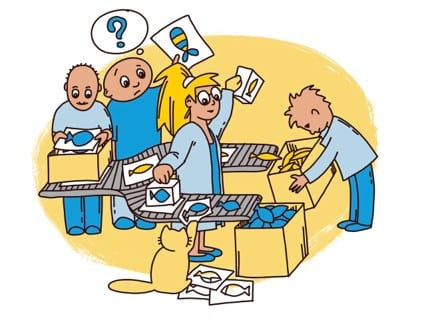
As a result, we have a fixed list of standard tasks. For each standard task, we have a fixed research protocol
But what about flexibility? What if every project has something unique?
If you really want to maximise the percentage of decisions that are based on research data, there should be no flexibility in the standard tasks. This is what will reduce the involvement of the researcher to a minimum and increase the capacity of the research department to the maximum.
The key at this stage is that you shouldn’t have to think about a standard task:
- Its input is clear
- Its output is clear
- It’s clear how to do it
- It is clear how to use the results and how to make a decision
03. AUTOMATION
Standard research protocols are easy to automate. No matter what technical solutions you use, the result should be something like this:
- Easy selection of a task from a fixed list
- Simple project launch (load stimuli, select target audience)
- Fully automated data collection
- Fully automated data processing
- Fully automated report preparation
The key point at this stage is to minimise manual work. Ideally, the launch of the project should take 5 minutes, and the rest of the process, up to the finalised report, should not require human participation at all. All those principles we put into our insight platform Fastuna.
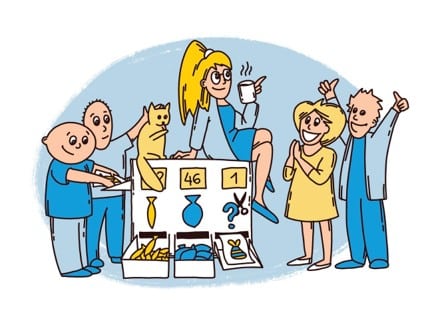
04. TRAINING AND PROCESSES
Now you can solve any standard testing task very quickly and with minimal effort. This will already significantly optimise the work of your research department.
However, if you want to take research to a fundamentally different level, you need to establish a process of interaction with product/brand teams. And this is probably the most difficult part of automation.
The challenge is that product teams do not think in terms of research tasks and are not good at recognizing them in the flow of their business. Another difficulty is the “attention window” that needs to be set aside for research. As a result, if research is not a mandatory part of the process, it turns out to be easier to make a decision on the basis of gut feeling than to get involved in a research project.
The task of the researcher is to minimise this “attention window” required from product/brand teams to conduct standard research. Moreover, this not only includes the time of their direct involvement— set a task, analyse results and make a decision—but also the passive waiting time for the results: how long do I need to remember about this task/project among many other active tasks that my team and I do in parallel, how much longer do I need to postpone a business decision.
To do this, you need to get to the following points:
- Teams are able to recognise standard research tasks
- Launching a typical project takes minutes and does not require filling out a detailed brief
- Results are ready the next day
- The results are clear and focus on only the necessary information, the team can quickly (and preferably independently) make a decision based on a standard report.
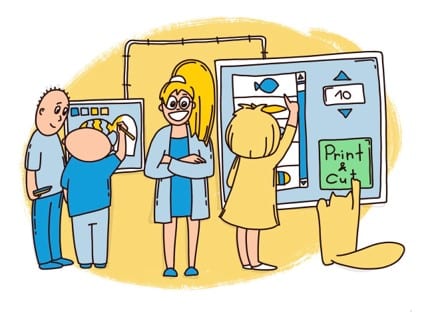
How to start communicating this to teams:
- Explain the difference between standard and complex tasks
- Assure and show on user cases that standard tasks are solved quickly
- Make publicly available a list of standard solutions that are supported in your organisation and practise “recognition” of the correct solution in particular business situations
- Go with the team all the way from defining a problem to making a decision using a particular example.
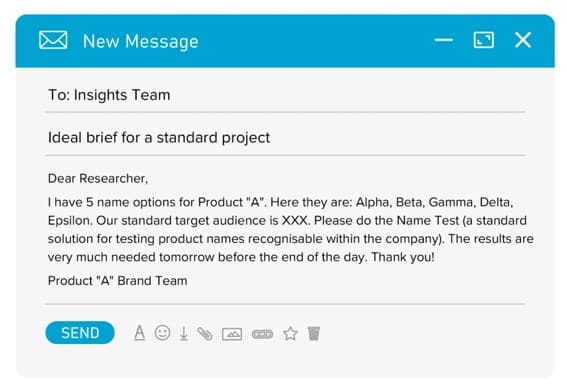
There is simply nothing to debate in this brief!
The most daring researchers can let teams launch research projects on their own using ready-to-use solutions
The key point at this stage is to lower the barrier to the use of research by project/brand teams. The task of a researcher is to train product teams and provide them with a convenient process.
SUMMARY
To conclude, here are some useful tips that a researcher can do to keep up with their workload on the one hand, and to help the business become more efficient on the other.
- Think business, not project. It will help you prioritise and de-prioritise multiple tasks and keep an eye on the business goals. Thus, the ROI of research projects will increase because it will provide the business with actionable and focused insights.
- Standartise and automate all standard tasks. Minimise your involvement in these kinds of tasks. This will free up your time to think and work on more complex strategic tasks.
- Follow standard procedures and protocols. Don’t give in to the pleas from the teams “but let’s do it differently at least once.” Be firm — if there are procedures and standard protocols, follow them, no exceptions.
It is useful to remember that automation is not only technology, but also standardisation, processes and team training. Automation of all stages of research not only speeds up and simplifies processes, but also significantly increases the number of decisions based on customer feedback. This results in a more efficient and profitable business as well as confidence in that your teams are doing the right thing thus helping the business grow.



